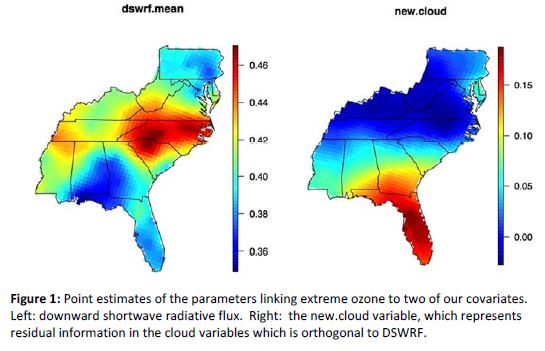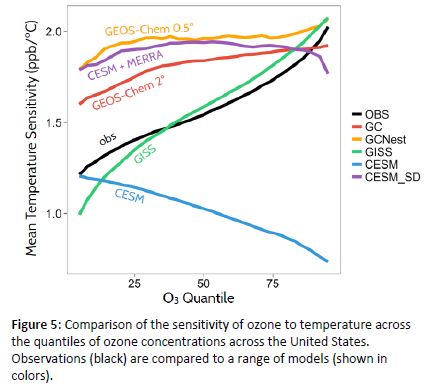Grantee Research Project Results
2014 Progress Report: Using Advanced Statistical Techniques to Identify the Drivers and Occurrence of Historical and Future Extreme Air Quality Events in the United States from Observations and Models
EPA Grant Number: R835228Title: Using Advanced Statistical Techniques to Identify the Drivers and Occurrence of Historical and Future Extreme Air Quality Events in the United States from Observations and Models
Investigators: Heald, Colette L. , Brown, Barbara G , Hodzic, Alma , Reich, Brian , Cooley, Dan , Gilleland, Eric
Current Investigators: Heald, Colette L. , Hodzic, Alma , Reich, Brian , Cooley, Dan
Institution: Massachusetts Institute of Technology , North Carolina State University , Colorado State University
Current Institution: Massachusetts Institute of Technology , Colorado State University , National Center for Atmospheric Research , North Carolina State University
EPA Project Officer: Chung, Serena
Project Period: June 1, 2012 through May 31, 2015 (Extended to May 31, 2016)
Project Period Covered by this Report: June 1, 2014 through May 31,2015
Project Amount: $749,931
RFA: Extreme Event Impacts on Air Quality and Water Quality with a Changing Global Climate (2011) RFA Text | Recipients Lists
Research Category: Watersheds , Air Quality and Air Toxics , Water , Air , Climate Change
Objective:
Extreme weather events can be accompanied by extreme air quality degradation with associated costs to human health and society. The relationship between extreme weather and air quality is poorly understood, and relatively untested in models. Given expected changes to climate, we will quantify this hazard based on the observational record and verify with what fidelity models reproduce the relationships between extreme weather and air quality for present day and then project how these might change in the future.
Progress Summary:
Key Findings


Future Activities:
Journal Articles on this Report : 5 Displayed | Download in RIS Format
| Other project views: | All 38 publications | 12 publications in selected types | All 12 journal articles |
|---|
| Type | Citation | ||
|---|---|---|---|
|
|
Porter WC, Heald CL, Cooley D, Russell B. Investigating the observed sensitivities of air-quality extremes to meteorological drivers via quantile regression. Atmospheric Chemistry and Physics 2015;15(18):10349-10366. |
R835228 (2014) R835228 (Final) |
Exit Exit Exit |
|
|
Reich BJ, Shaby BA. A hierarchical max-stable spatial model for extreme precipitation. Annals of Applied Statistics 2012;6(4):1430-1451. |
R835228 (2013) R835228 (2014) R835228 (Final) |
Exit Exit Exit |
|
|
Reich BJ, Chang HH, Foley KM. A spectral method for spatial downscaling. Biometrics 2014;70(4):932-942. |
R835228 (2013) R835228 (2014) R835228 (Final) R834799 (2014) R834799 (2015) R834799 (2016) R834799 (Final) |
Exit Exit Exit |
|
|
Reich B, Cooley D, Foley K, Napelenok S, Shaby B. Extreme value analysis for evaluating ozone control strategies. Annals of Applied Statistics 2013;7(2):739-762. |
R835228 (2012) R835228 (2013) R835228 (2014) R835228 (Final) |
Exit Exit Exit |
|
|
Sun W, Reich BJ, Cai TT, Guindani M, Schwartzman A. False discovery control in large-scale spatial multiple testing. Journal of the Royal Statistical Society: Series B, Statistical Methodology 2015;77(1):59-83. |
R835228 (2013) R835228 (2014) R835228 (Final) |
Exit Exit |
Progress and Final Reports:
Original AbstractThe perspectives, information and conclusions conveyed in research project abstracts, progress reports, final reports, journal abstracts and journal publications convey the viewpoints of the principal investigator and may not represent the views and policies of ORD and EPA. Conclusions drawn by the principal investigators have not been reviewed by the Agency.



